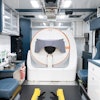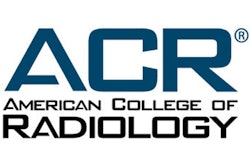Sunday, November 26 | 11:25 a.m.-11:35 a.m. | SSA21-05 | Room S404AB
Continuing advances have given rise to an ultrahigh-resolution (UHR) photon-counting detector CT technique that improves resolution and allows for reductions in radiation dose, according to U.S. researchers.Ultrahigh-resolution imaging has been criticized for depending on high radiation doses to compensate for a comb filter that blocks up to three-quarters of its detecting surface. Researchers from Emory University Hospital in Atlanta turned to lowering voxel size instead of applying a comb filter to enhance the spatial resolution of images without such elevated exposure.
They used UHR photon-counting CT to acquire scans of the brain and lungs of eight volunteers. Reconstruction of the scans at a 0.25-mm voxel size increased image resolution from 9 to 19 line pairs per cm (LP/cm). Moreover, UHR scans acquired using a voxel size of 0.5 mm displayed 20% less noise than standard resolution scans with the same parameters.
Acquiring ultrahigh-resolution photon-counting CT scans this way provides the advantages of lower dose levels compared with UHR scans that use a comb filter, as well as less image noise compared with standard-resolution scans, according to presenter Amir Pourmorteza, PhD.
UHR photon-counting CT may thus be a viable option for extremely high-quality images at acceptable dose levels, he concluded.




















